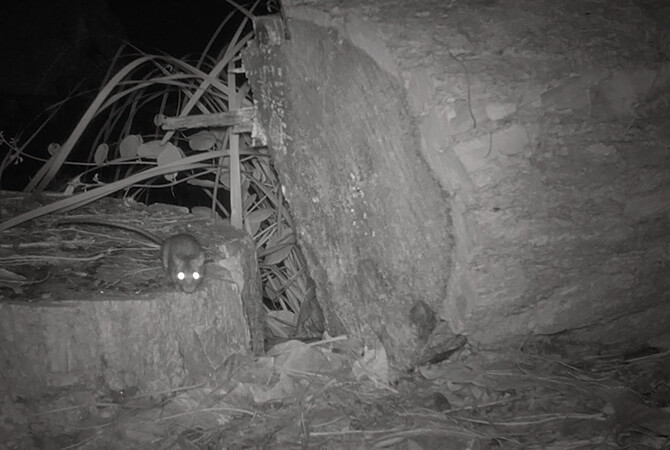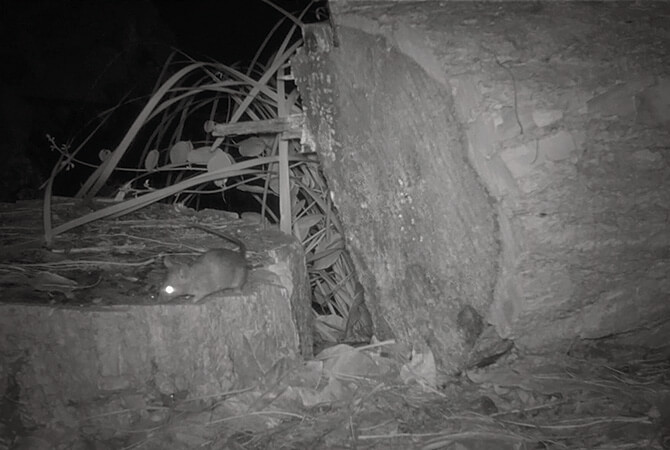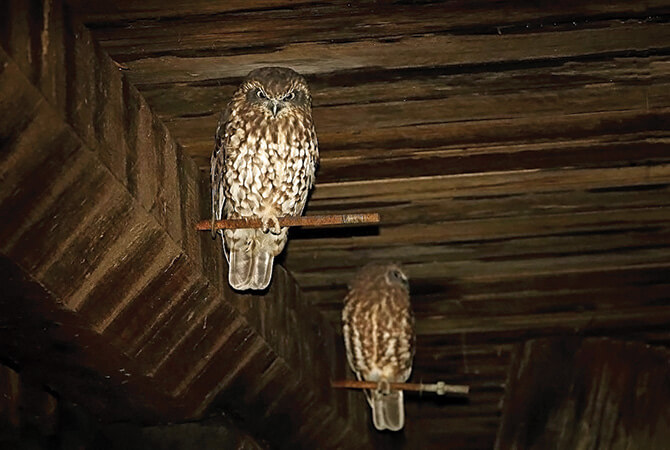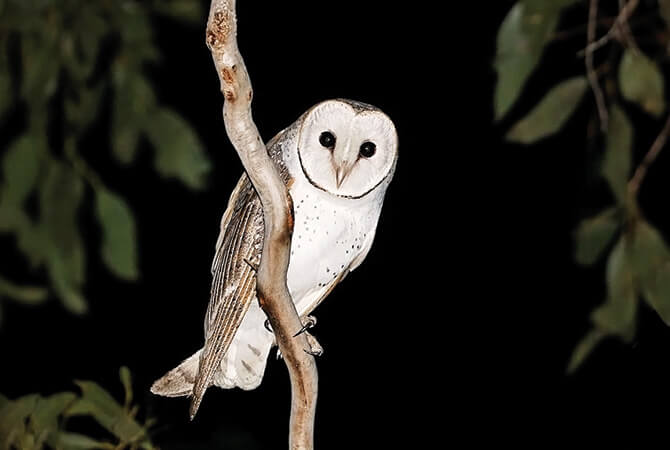A s I was reading about the success of the Powerful Owl project (see facing article), I was reminded of a nasty threat to our owls: secondary poisoning from rodent baits. As Editor of this newsletter, I try to ensure articles are positive and practical to avoid environmental doom overload. I weighed up whether to write this article but decided that most, if not all, Land for Wildlife members would want to help owls, so I hope this goes some way to raising awareness of this issue.
Let’s start by looking at the source of the problem, rodenticides. They fall into two broad categories: first-generation and second-generation anticoagulants. First generation rodenticides require the rodent to eat the bait several times before a lethal dose accumulates. Second generation rodenticides act faster and require only one feed for them to be lethal.
The problem with second-generation rodenticides is that they persist in dead and dying animals and when a poisoned mouse or rat is eaten by an owl, the poison can also kill the owl. Owls are not the only non-target animal affected. Rodenticides can also kill pet cats and dogs, birds of prey and other wildlife that scavenge on rodents. Rodenticides also build-up in animals over generations with one generation passing on the poison to their young. For example, 95% of Barn Owls and 100% of Kestrels in the UK now have some levels of rodenticide in their systems.
The USA, Canada and EU have banned the public sale of second-generation rodenticides with licensed pest controllers being the only people still allowed to use them, and first-generation rodenticides can only be purchased by the public in tamper-proof bait stations.
So that is all quite depressing especially given owls are such magnificent creatures and any encounter with one is a privileged wildlife moment. So what can we do?
If you need to control introduced rodents (please don’t trap our native mice and rats), try to use the old-style manual mice and rat traps, or live cage traps or modern electric traps. Mechanical and electrical traps do not pass on any poisons.
Try to make your house and garden less attractive to pest mice and rats. For example, use rodent-proof compost heaps and chicken feeders that only release food needed by your chickens. Collect fallen orchard fruit and don’t leave out pet food overnight. Remove material where mice and rats nest or shelter. Block openings where mice or rats are entering buildings. By restricting the amount of free food and shelter for rodents, their numbers should not boom to pest levels.
If you do need to use a poison, there are now products on the market that do not use anticoagulants. They instead use sodium chloride (salt) and cause rodents to die of dehydration.
Buying rodent poison can be tricky as you will have to look closely for the active ingredient. First-generation anticoagulants have an active ingredient of either warfarin or coumateralyl. Second-generation rodenticides are usually labelled ‘single-dose action’ or ‘one feed’ and contain active ingredients of either brodifacoum, bromadiolone, difethialone or difenacoum. All common household brands like RatSak, The Big Cheese and Talon use either first or second-generation rodenticides or salt – please read the labels.
People have campaigned for many years to change laws relating to rodenticide use in Australia and I take my hat off to them. I am sure that it is only a matter of time before our love and ecological understanding of owls wins.
For more information visit:
www.actforbirds.org/ratpoison
www.landcaretas.org.au/rodenticides
www.barnowltrust.org.uk
Article by Deborah Metters
Land for Wildlife Regional Coordinator
View Full Newsletter





Hello Deborah, we are in the Gold Coast hinterland. It is most concerning the poisons out there not just rat baits. We believe we lost our Tawny Frogmouth, he/she wasnt able to fly, and i assume he/she has gone somewhere die. We had 4 in our poinciana, and maybe more as a month or so back there was a body at base of the tree, and we beleive that was a tawny frogmouth also. We live trap and we no longer use a bbq, our neighbour uses poisons, and baits. I supsect that is why we no longer have any tawny frogmouths, why doesnt our government ban these poisons !
Its very sad, to lose birds who have been with us for years, we lost the small birds some years ago, we had powerful owls and wrens, king fishers near the creek all gone ;(, only mostly noisy miners now, a future pest in this country i think
Pretty stupid really to risk killing off the very creatures that are respondible for controlling the rodent population viz. Owls, other birds of prey and fiesty terriers!
Thank you
We had a rat infestation our house ceiling. We have never used rodenticides because we live rurally and value our wildlife. Instead we have used a variety of electrical and mechanical devices over the years.
We thought we would try the new Ratsak Naturals, but not before getting an assurance that reptiles such as carpet pythons and goannas would be unharmed should they prey on a Ratsak naturals medicated rat.
The Ratsak naturals worked quite well over time. The problem is that the Naturals product best use is when the rats don’t have access to other food sources, Our roof rats obviously had alternative sources of food because we used several packets before they all went.
Ratsak should consider selling much larger packet sizes I feel. Their product is expensive compared to rodenticide products and that is disappointing.
We don’t have a rat problem in the shed because we throw any discarded snake skins we find in the shed and leave the car bonnets up always.
We also oftentimes have a resident carpet python in the shed which helps to keep rats at bay. Pity we didn’t have one living in our house roof!